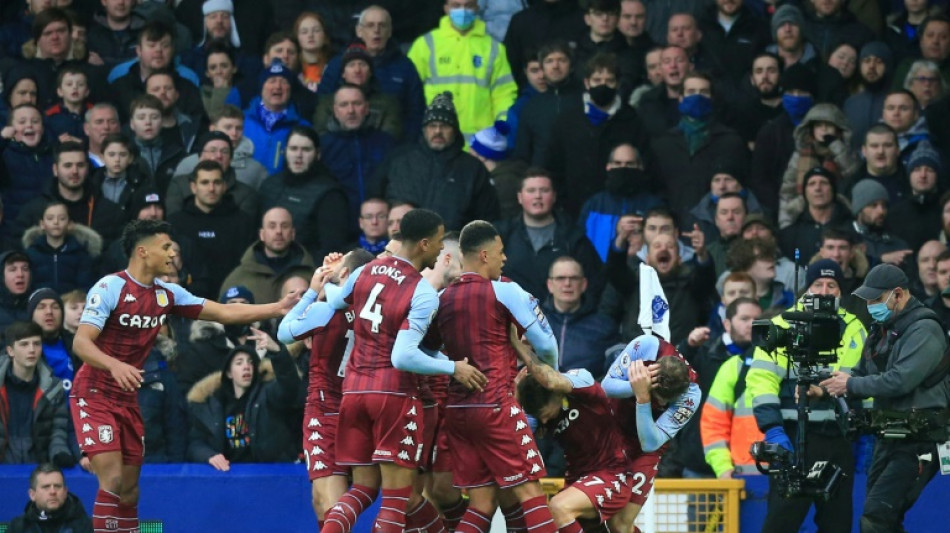

Fan violence revives memories of British football's dark days
Britain's head of football policing has warned that coordinated action must be taken to stop fan violence spiralling out of control after a significant rise in disorder and arrests this season.
Chelsea defender Antonio Rudiger and Aston Villa pair Matty Cash and Lucas Digne were hit by missiles thrown by fans during recent games.
At Southampton, stewards battled to restore order after Manchester City supporters invaded the pitch and threw flares.
Earlier this season, Manchester United and Leeds fans fought in the streets, while a teenager has been charged after three Nottingham Forest players were allegedly assaulted during Sunday's FA Cup win over Leicester.
The shocking incidents underline the growing cases of football hooliganism, bringing back memories of the violent dark days of the 1980s, when it was dubbed the "English disease".
Recent figures from the UK Football Policing Unit -- related to the top five divisions in English football -- show there were 802 football-related arrests in the first half of this season.
That is up nearly 50 percent from the figure of 547 in the same period during the 2019/20 season, before the coronavirus took hold and fans were locked out of stadiums.
A 36 percent rise in disorder in the period, from July 1 to December 31 2021, emphasises the difficulties facing police and the sport's authorities as they try to clamp down on the troublemakers.
The stark figures come after a recent report into violence at the Euro 2020 final at Wembley, which found crowd trouble could have led to tragedy.
Mark Roberts, the National Police Chiefs' Council's football policing lead, wants an immediate, unified response from all parties and has called for an "urgent" meeting with Premier League chiefs, as well as the English Football League and Football Association.
- Worsening picture -
"It would be wrong to say we are back where we were but it is certainly a deteriorating picture and coordinated action is required if it isn't to slip further backwards," Roberts told AFP.
"This will take a joined-up response from clubs, the league, government, fans and the police."
The rise in crowd trouble is partly fuelled by an increase in younger supporters being drawn into the disorder, according to Roberts.
"Unfortunately there has been an increase in younger fans getting involved in anti-social behaviour and disorder in football," he said. "It's difficult to pinpoint a reason for this but it is a clear trend."
Professor Geoff Pearson, an expert in football disorder and policing at the University of Manchester, agrees that the influx of new, younger fans has caused problems.
"Potentially we have two to three years' worth of 15, 16 and 17-year-olds in particular who are suddenly going to the match. They are giddy and excited and don't necessarily know how to conduct themselves. Some of them are causing problems," Pearson told AFP.
"A lot of officers I've spoken to have said 'we've seen these issues, we don't necessarily know who the people are'. They are not known to us anymore. That gap is problematic for policing."
As trouble surges, Roberts is frustrated that Premier League clubs do not take on more of the cost of ensuring their stadiums are properly policed.
"Security inside grounds is the responsibility of the clubs but where there is a particular risk then the deployment of officers is necessary to deal with flashpoints and ideally prevent issues developing," he said.
"Policed games have risen from 44 percent of matches to 66 percent so far this year, which is indicative of the scale of the issues. Policing makes a significant loss on this."
Clubs often prefer to use their own security staff to keep costs down, but Pearson said there was now a lack of experienced stewards to help quell trouble.
While the problem is a cause for concern, he is confident there will not be a return to the bloody terrace battles that scarred football in previous decades.
"We need to not get carried away," he said. "When you look at arrest statistics, we are still only talking about the levels of 2015. We are not going back to the '80s or '90s."
A.Famiglietti--LDdC



